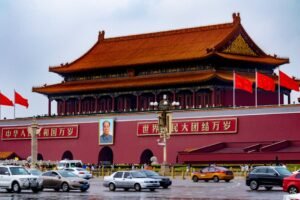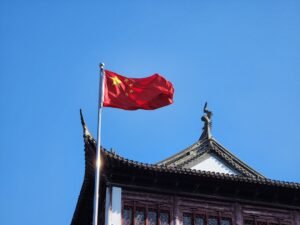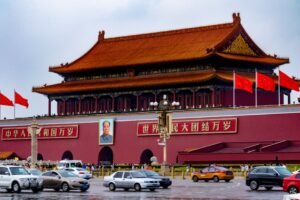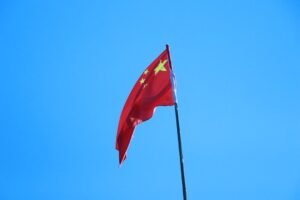In the rich tapestry of Mandarin Chinese, the phrase 连 (lián)…都 (dōu) serves as a powerful linguistic tool to convey the concept of “even.” This construction is particularly useful for emphasising inclusivity or unexpectedness in a statement. The beauty of this expression lies in its ability to elevate the significance of the subject it modifies, allowing speakers to articulate nuances that might otherwise be lost in translation. As learners delve into the intricacies of this phrase, they will discover how it can enhance their communication skills and deepen their understanding of the language.
The phrase 连 (lián)…都 (dōu) is not merely a grammatical structure; it embodies a cultural perspective that values subtlety and depth in expression. By mastering this construction, learners can express ideas with greater clarity and impact. This article aims to explore the various dimensions of using 连 (lián)…都 (dōu), providing insights into its usage, examples, and common pitfalls to avoid.
As we embark on this journey, we will uncover the layers of meaning that this phrase can convey, enriching our appreciation for Mandarin Chinese. The LC Chinese School in Oslo now offers comprehensive Chinese courses for all levels, from beginner to advanced.
Table of Contents
ToggleSummary
- “连 (lián) and 都 (dōu) are used to express ‘even’ in Mandarin Chinese, indicating an unexpected or extreme situation.”
- “连 (lián) is used before the subject or verb, while 都 (dōu) is used after the subject or verb.”
- “连 (lián) is used to emphasize the inclusiveness of the statement, while 都 (dōu) is used to emphasize the universality of the statement.”
- “When using 连 (lián) and 都 (dōu) together, 连 (lián) comes before the subject or verb, and 都 (dōu) comes after the subject or verb.”
- “Examples of using 连 (lián)…都 (dōu) in sentences can help to understand the correct usage and placement of these words in a sentence.”
To fully grasp the significance of 连 (lián), it is essential to understand its role within the phrase. In Mandarin, 连 (lián) translates to “even” or “including,” and it serves as a marker that introduces an element that is surprising or noteworthy. This word sets the stage for what follows, indicating that the subsequent information is not just ordinary but rather exceptional in some way.
For instance, when one says “连他都来了” (lián tā dōu lái le), it translates to “Even he came,” suggesting that his attendance was unexpected or noteworthy. 连 (lián) can be used in various contexts, from casual conversations to more formal discussions. Its versatility allows speakers to emphasise different aspects of a situation, making it a valuable addition to one’s vocabulary.
Understanding how to use 连 (lián) effectively can significantly enhance one’s ability to convey subtleties in meaning, making conversations more engaging and dynamic.
Understanding the usage of 都 (dōu)
On the other hand, 都 (dōu) also plays a crucial role in this construction. Translated as “all” or “both,” 都 (dōu) reinforces the idea of inclusivity and universality. It suggests that whatever is being discussed applies to all relevant subjects or objects within a given context.
For example, in the phrase “他们都来了” (tāmen dōu lái le), meaning “They all came,” 都 (dōu) emphasises that every individual in the group attended, leaving no one out. The use of 都 (dōu) adds a layer of emphasis that complements the function of 连 (lián). Together, they create a powerful expression that highlights not only the unexpectedness of a situation but also its comprehensive nature.
This dual emphasis allows speakers to convey a sense of surprise while simultaneously affirming that the statement applies broadly, making it an essential component of effective communication in Mandarin.
How to use 连 (lián) and 都 (dōu) together

When combined, 连 (lián) and 都 (dōu) form a cohesive unit that amplifies the meaning of a sentence. The structure typically follows a pattern where 连 (lián) precedes the subject or object being emphasised, followed by 都 (dōu) and then the verb or action. This arrangement creates a rhythm that draws attention to the unexpected nature of the statement while ensuring that it encompasses all relevant elements.
For instance, one might say “连小猫都喜欢喝牛奶” (lián xiǎo māo dōu xǐ huān hē niú nǎi), which translates to “Even the kitten likes drinking milk.” Here, the use of 连 (lián) highlights the surprising fact that even a small creature like a kitten enjoys something typically associated with larger animals. The inclusion of 都 (dōu) reinforces that this preference applies universally within the context provided. Mastering the combination of 连 (lián) and 都 (dōu) requires practice and familiarity with sentence structures in Mandarin.
As learners become more comfortable with this construction, they will find themselves able to express complex ideas with greater ease and precision.
To illustrate the effectiveness of 连 (lián)…都 (dōu), consider several examples that showcase its versatility across different contexts. One might say “连我妈妈都不知道这个消息” (lián wǒ māma dōu bù zhīdào zhège xiāoxī), meaning “Even my mother doesn’t know this news.” In this case, the speaker emphasises that even someone who is typically well-informed is unaware of this particular piece of information, highlighting its significance. Another example could be “连最难的题目他都能解答” (lián zuì nán de tímù tā dōu néng jiědá), which translates to “Even he can solve the most difficult problems.” Here, the phrase underscores the unexpected capability of an individual who may not be perceived as particularly skilled in problem-solving.
Such examples demonstrate how this construction can effectively convey surprise and inclusivity in various scenarios.
The construction 连 (lián)…都 (dōu) can also be employed with adjectives to emphasise qualities or characteristics that may be surprising or noteworthy. For instance, one might say “连这个地方都很美” (lián zhège dìfāng dōu hěn měi), meaning “Even this place is beautiful.” In this sentence, the speaker highlights an unexpected beauty in a location that may not typically be associated with such an attribute. Using adjectives with 连 (lián)…都 (dōu) allows for nuanced expressions that can convey admiration or surprise regarding certain qualities.
Another example could be “连他的声音都很好听” (lián tā de shēngyīn dōu hěn hǎotīng), which translates to “Even his voice is pleasant to listen to.” This construction effectively underscores an unexpected positive trait, enhancing the overall impact of the statement.
In addition to adjectives, 连 (lián)…都 (dōu) can be seamlessly integrated with verbs to highlight actions that are surprising or noteworthy. For example, one might say “连她都能跑得很快” (lián tā dōu néng pǎo de hěn kuài), meaning “Even she can run very fast.” Here, the emphasis lies on an action that may not be expected from the subject, thereby adding depth to the statement. Another illustrative example could be “连我都想去旅行” (lián wǒ dōu xiǎng qù lǚxíng), which translates to “Even I want to travel.” This construction conveys a sense of surprise regarding the speaker’s desire, suggesting that it may be unexpected for them to express such a wish.
Using verbs with 连 (lián)…都 (dōu) enriches communication by allowing speakers to articulate actions in a way that captures attention and conveys emotion.
The flexibility of 连 (lián)…都 (dōu) extends to nouns as well, enabling speakers to emphasise specific subjects or objects within their statements. For instance, one might say “连这个问题都很复杂” (lián zhège wèntí dōu hěn fùzá), meaning “Even this question is very complicated.” In this case, the speaker highlights an unexpected complexity associated with a particular issue. Another example could be “连他的书都很有趣” (lián tā de shū dōu hěn yǒuqù), which translates to “Even his books are interesting.” Here, the emphasis lies on an object—his books—that may not typically be regarded as captivating.
By using nouns with 连 (lián)…都 (dōu), speakers can draw attention to specific elements within their discourse, enhancing clarity and engagement.
While mastering 连 (lián)…都 (dōu) can significantly enhance one’s Mandarin skills, learners often encounter common pitfalls that can lead to confusion or miscommunication. One frequent mistake is misplacing either 连 (lián) or 都 (dōu) within a sentence structure. It is crucial to remember that 连 should precede the subject or object being emphasised, followed by 都 before the verb or action.
Another common error involves using 连…都 in contexts where it may not be appropriate. For instance, using this construction with statements that do not convey surprise or unexpectedness can dilute its impact. Learners should ensure that they reserve this phrase for situations where it genuinely enhances their message and captures the intended nuance.
To effectively master the usage of 连 (lián)…都 (dōu), learners should engage in consistent practice and exposure to authentic Mandarin conversations. One effective method is to immerse oneself in Chinese media—such as films, television shows, or podcasts—where this construction is frequently used. Listening attentively will help learners internalise its rhythm and application within various contexts.
Additionally, practising speaking with native speakers or language partners can provide invaluable feedback on usage and pronunciation. Engaging in conversations where learners intentionally incorporate 连…都 will reinforce their understanding and confidence in using this expression correctly. Writing exercises that focus on creating sentences with this construction can also aid in solidifying comprehension and fluency.
In conclusion, mastering the usage of 连 (lián)…都 (dōu) is an essential step for anyone looking to enhance their proficiency in Mandarin Chinese. This powerful construction allows speakers to express inclusivity and unexpectedness effectively, enriching their communication skills and deepening their understanding of cultural nuances within the language. By exploring its various applications—whether with adjectives, verbs, or nouns—learners can articulate complex ideas with clarity and impact.
As they navigate potential pitfalls and engage in consistent practice, learners will find themselves increasingly comfortable using this expression in everyday conversations. Ultimately, embracing 连…都 will not only elevate one’s language skills but also foster a deeper appreciation for the beauty and intricacy of Mandarin Chinese. For those eager to further their journey into Mandarin Chinese, consider enrolling in courses at LC Chinese School in Oslo.
With expert instructors and a supportive learning environment, students can immerse themselves in the language while mastering essential structures like 连…都 among many others. Whether you are a beginner or looking to refine your skills, LC Chinese School offers tailored courses designed to meet your needs and help you achieve fluency in Mandarin Chinese.
Ready to speak Chinese? Enroll now at the LC Chinese School.







